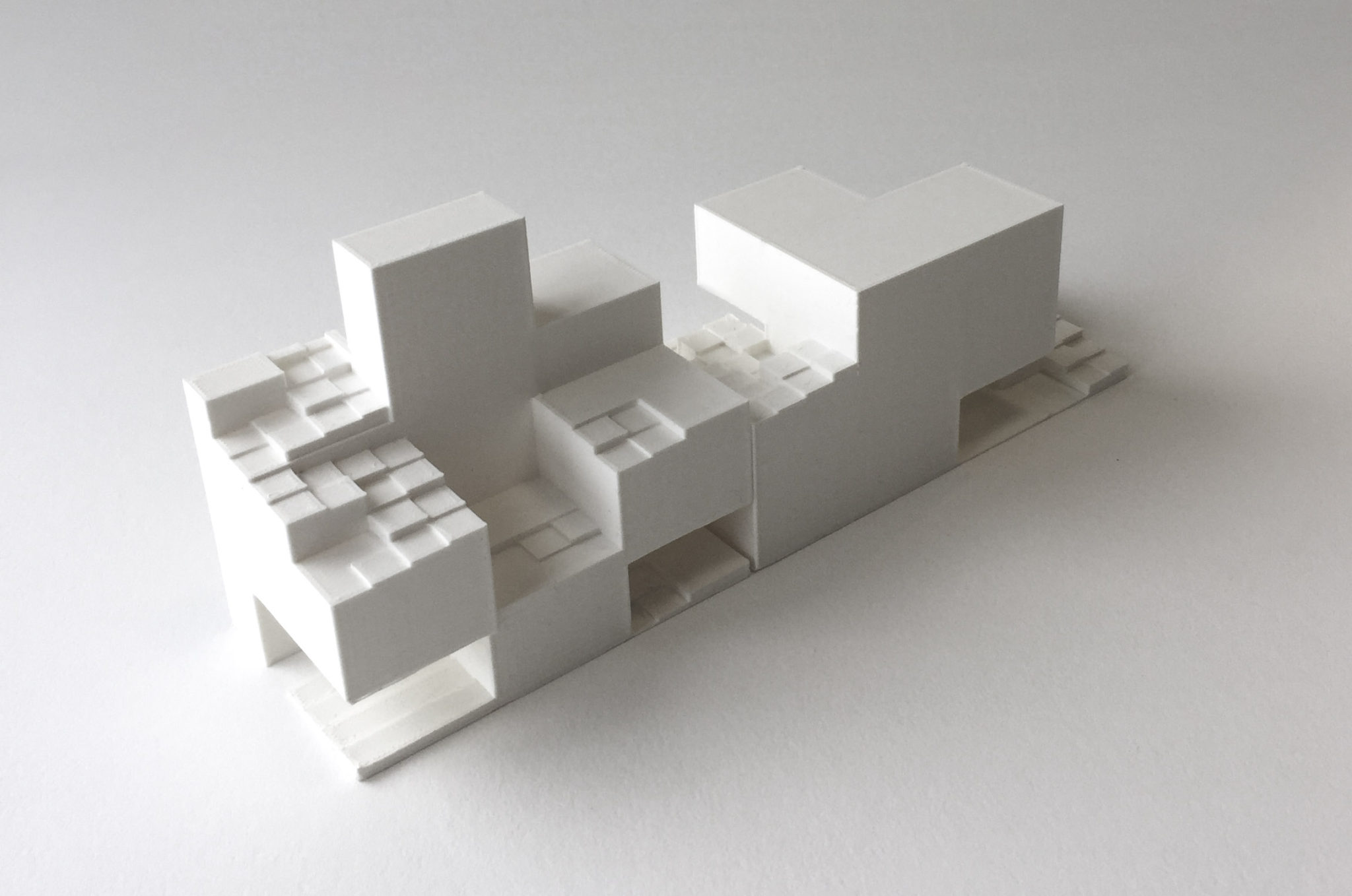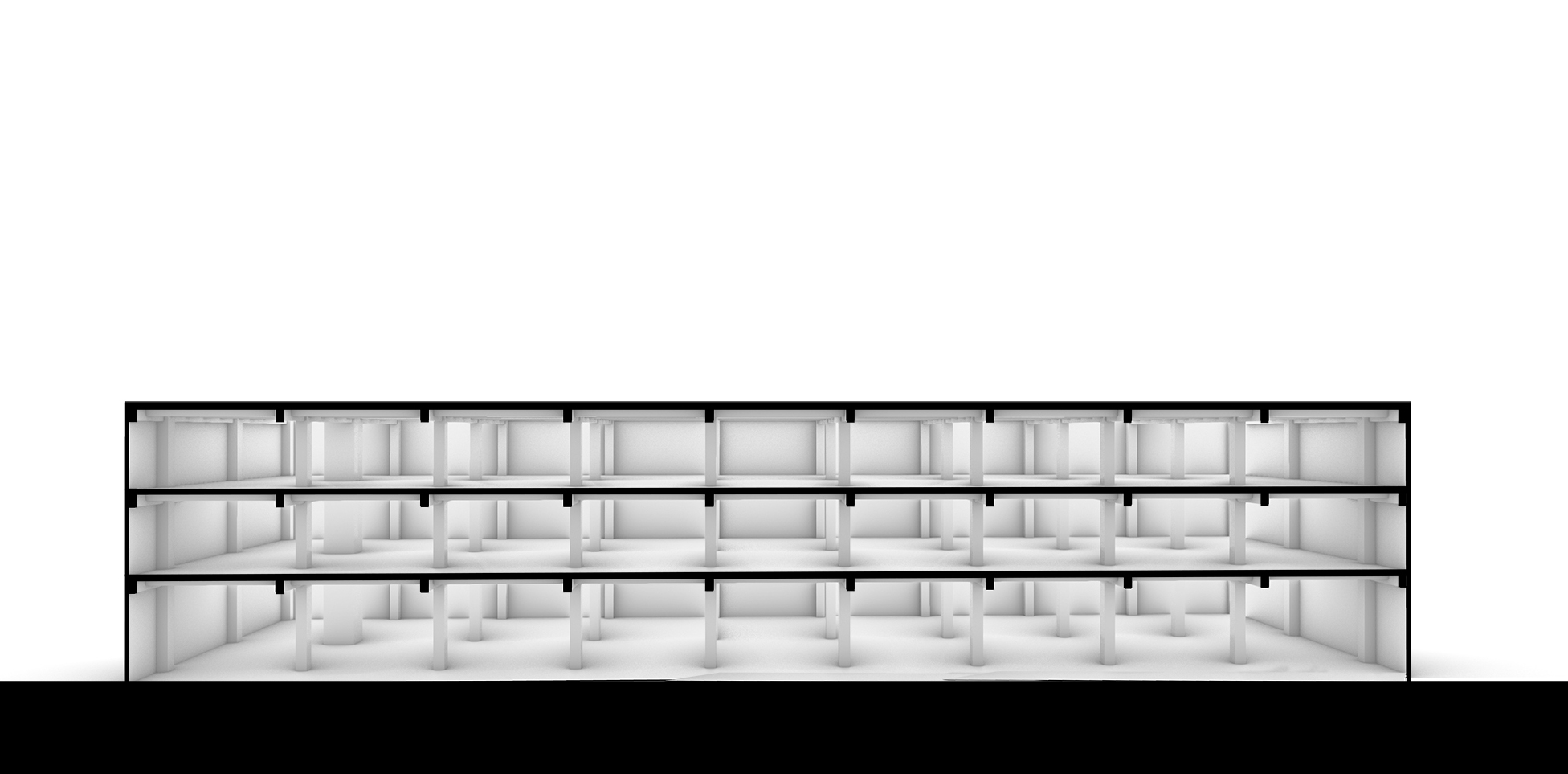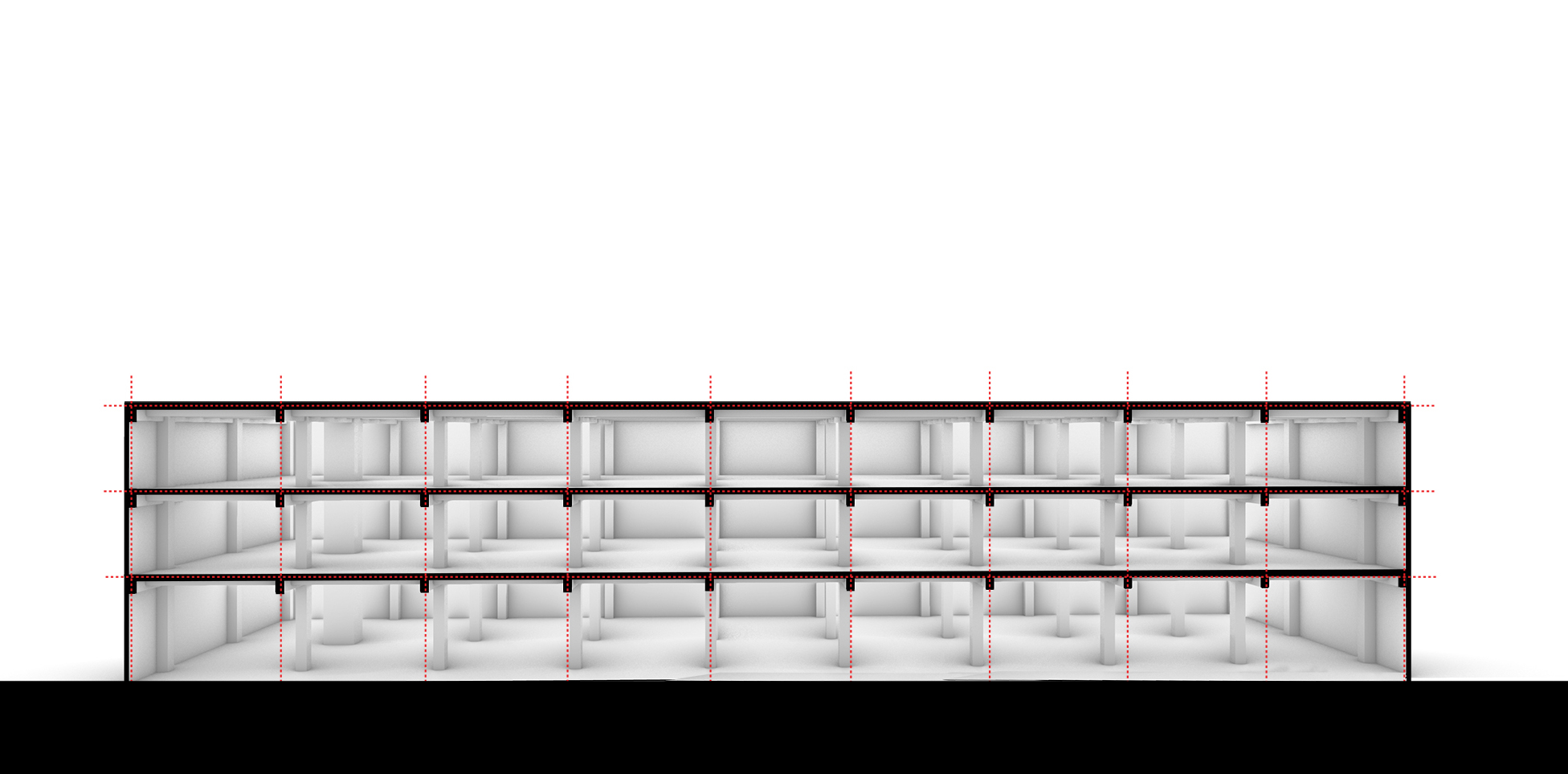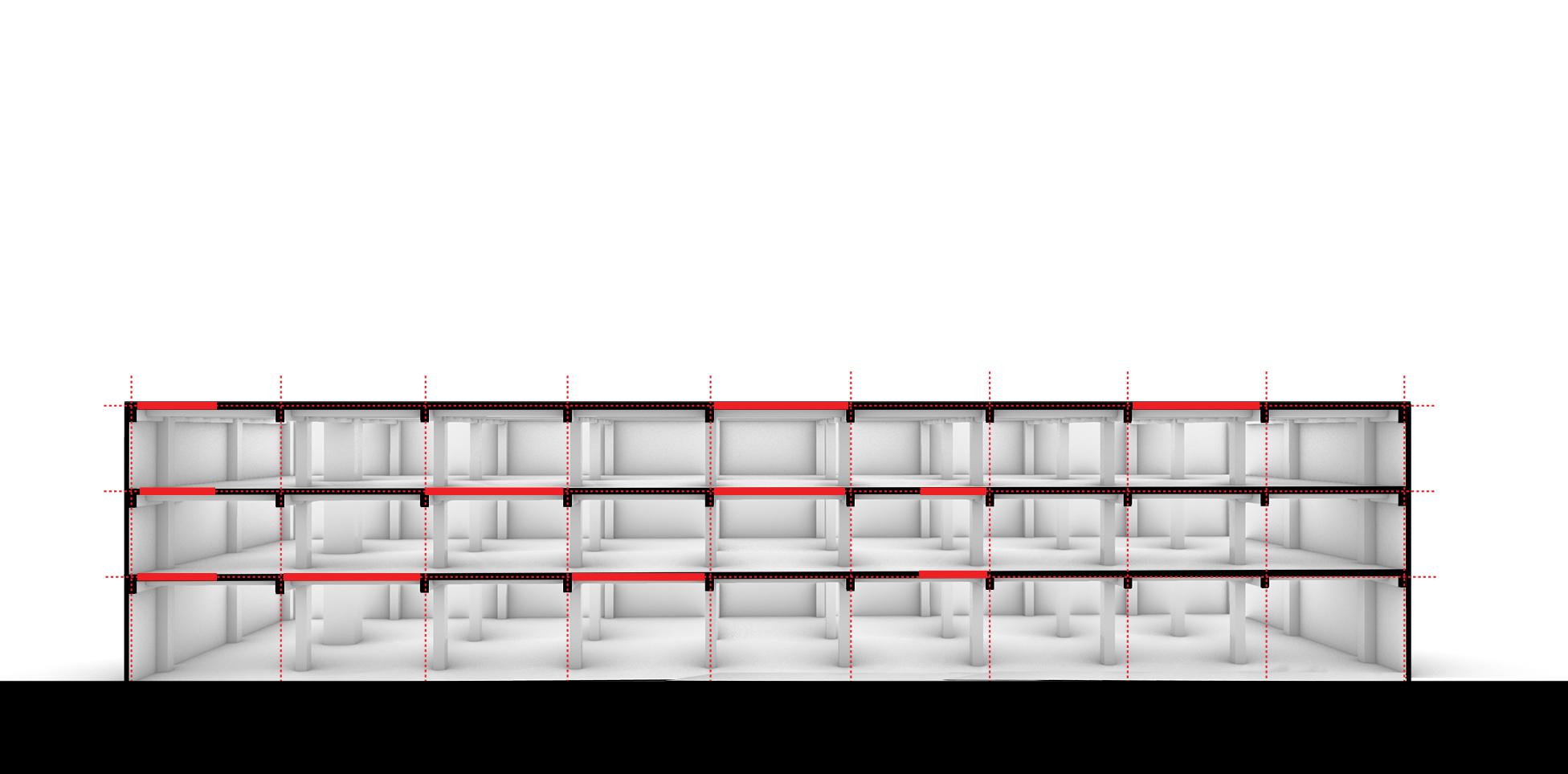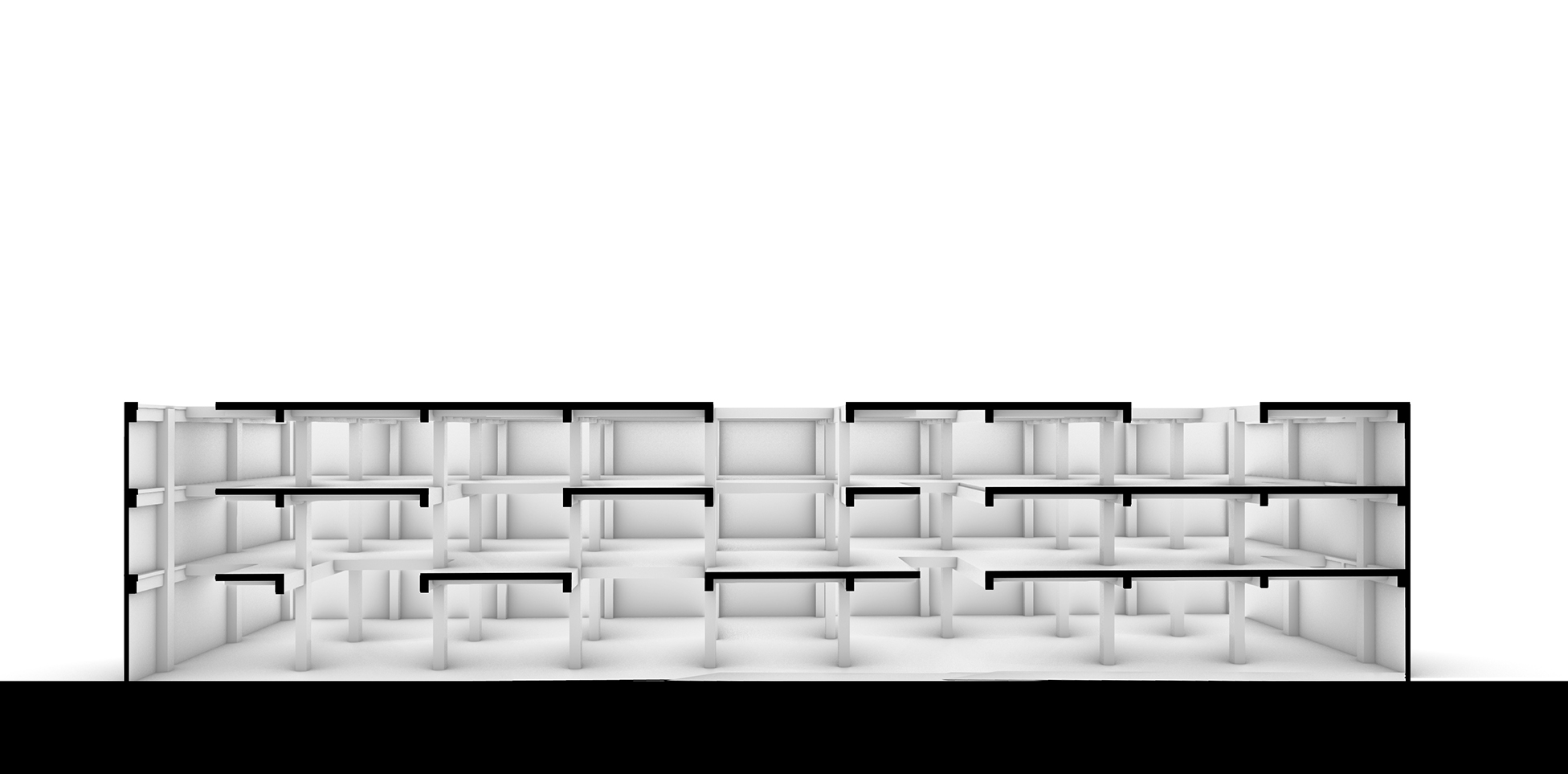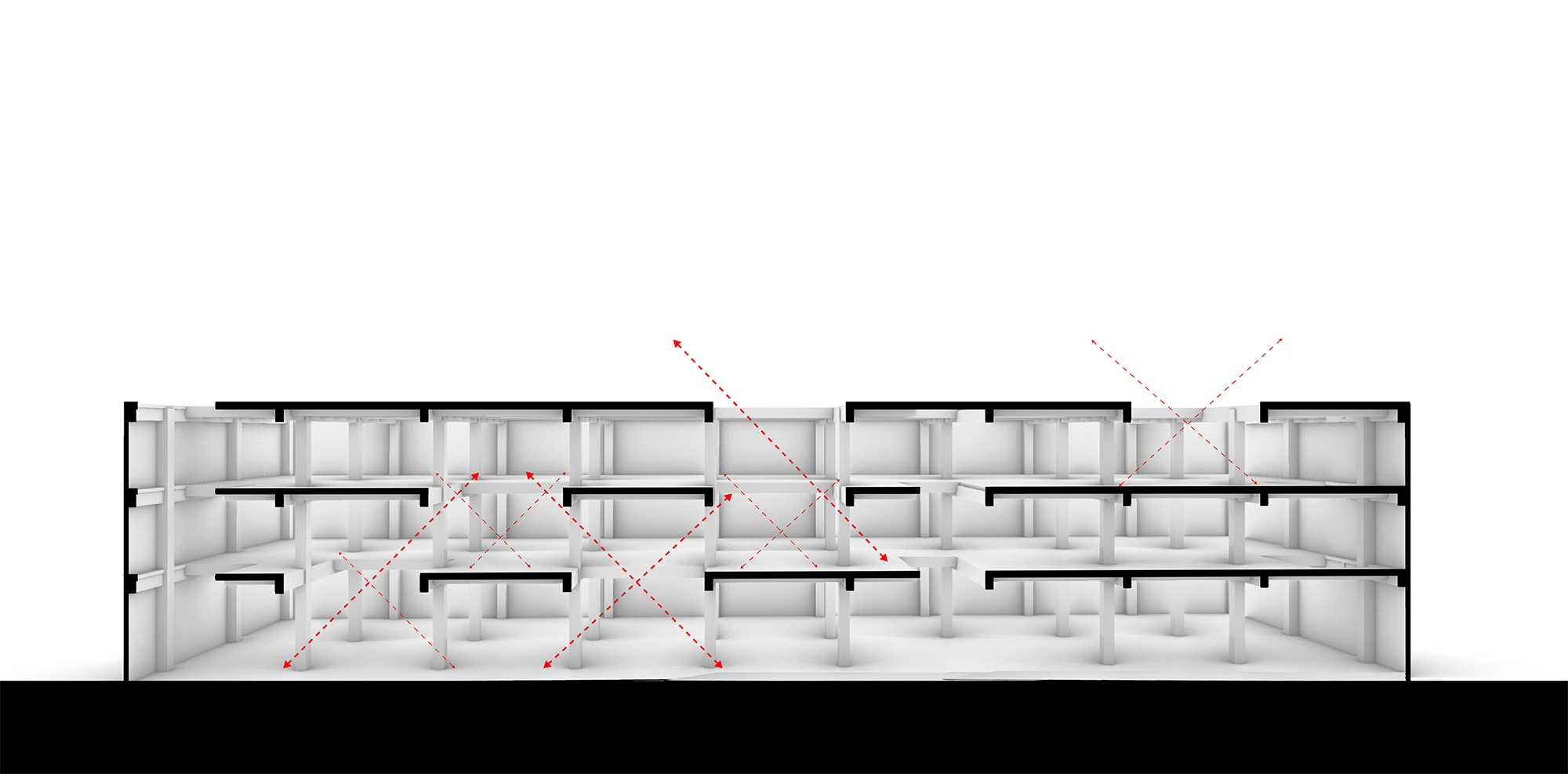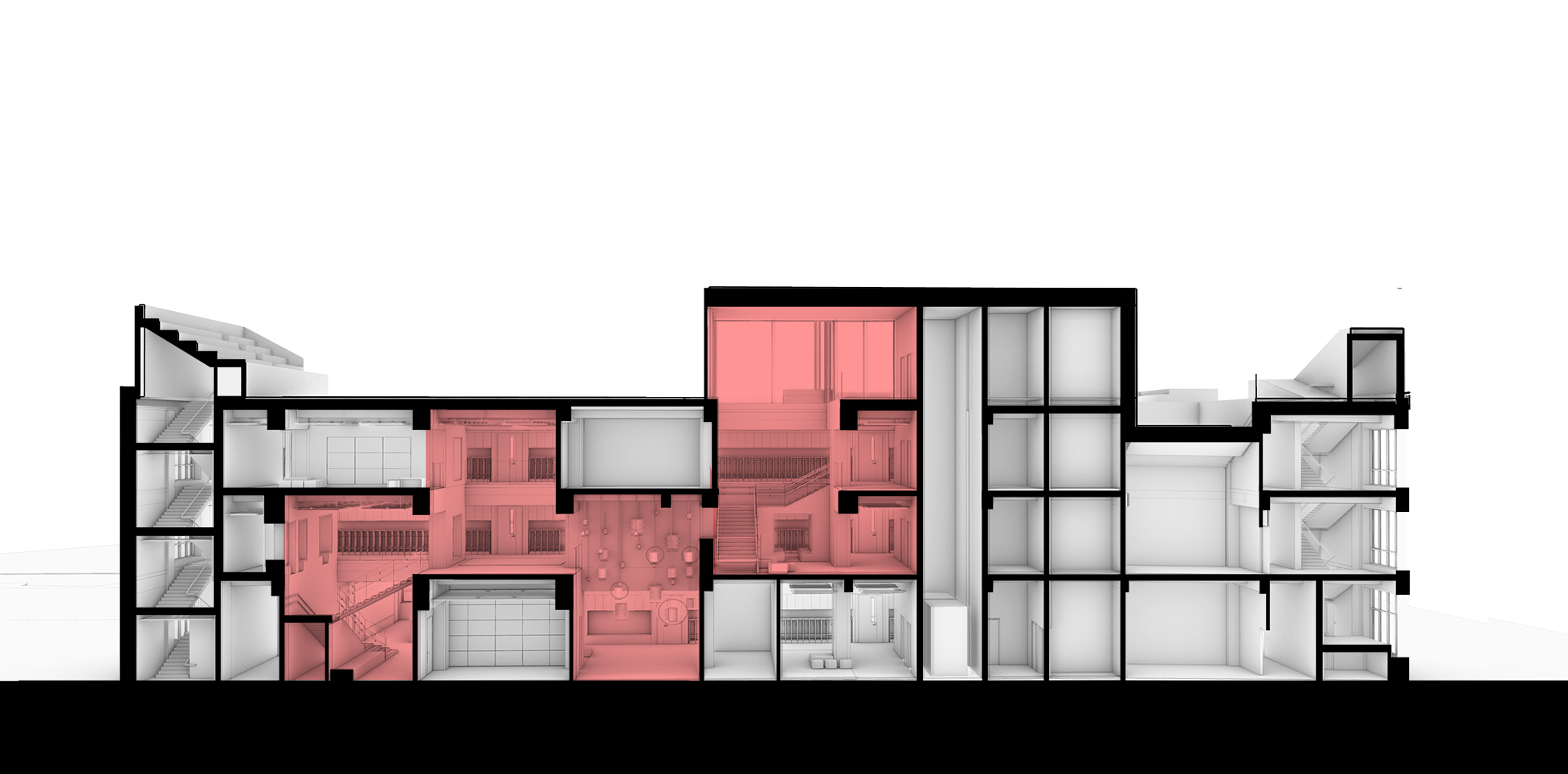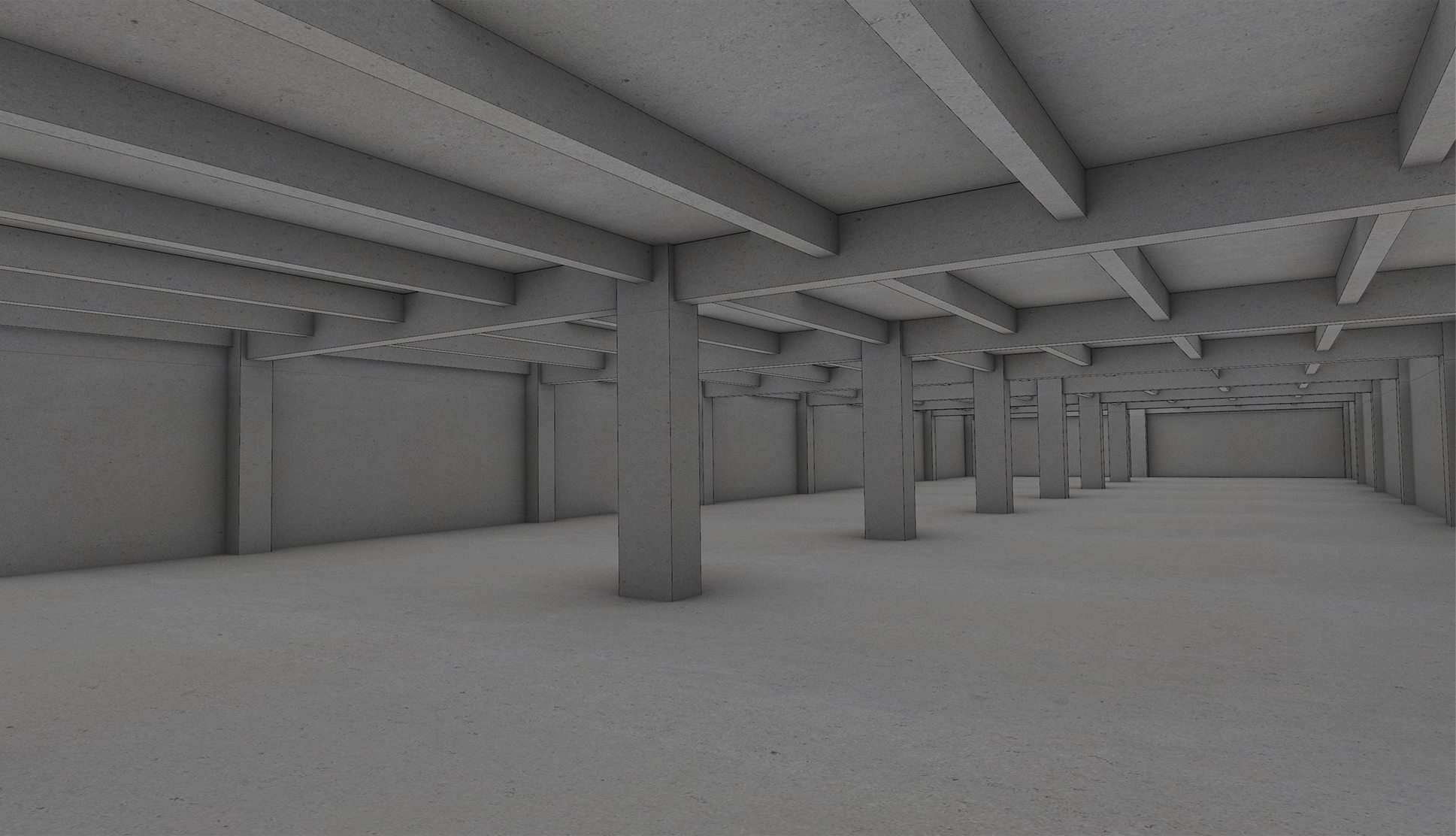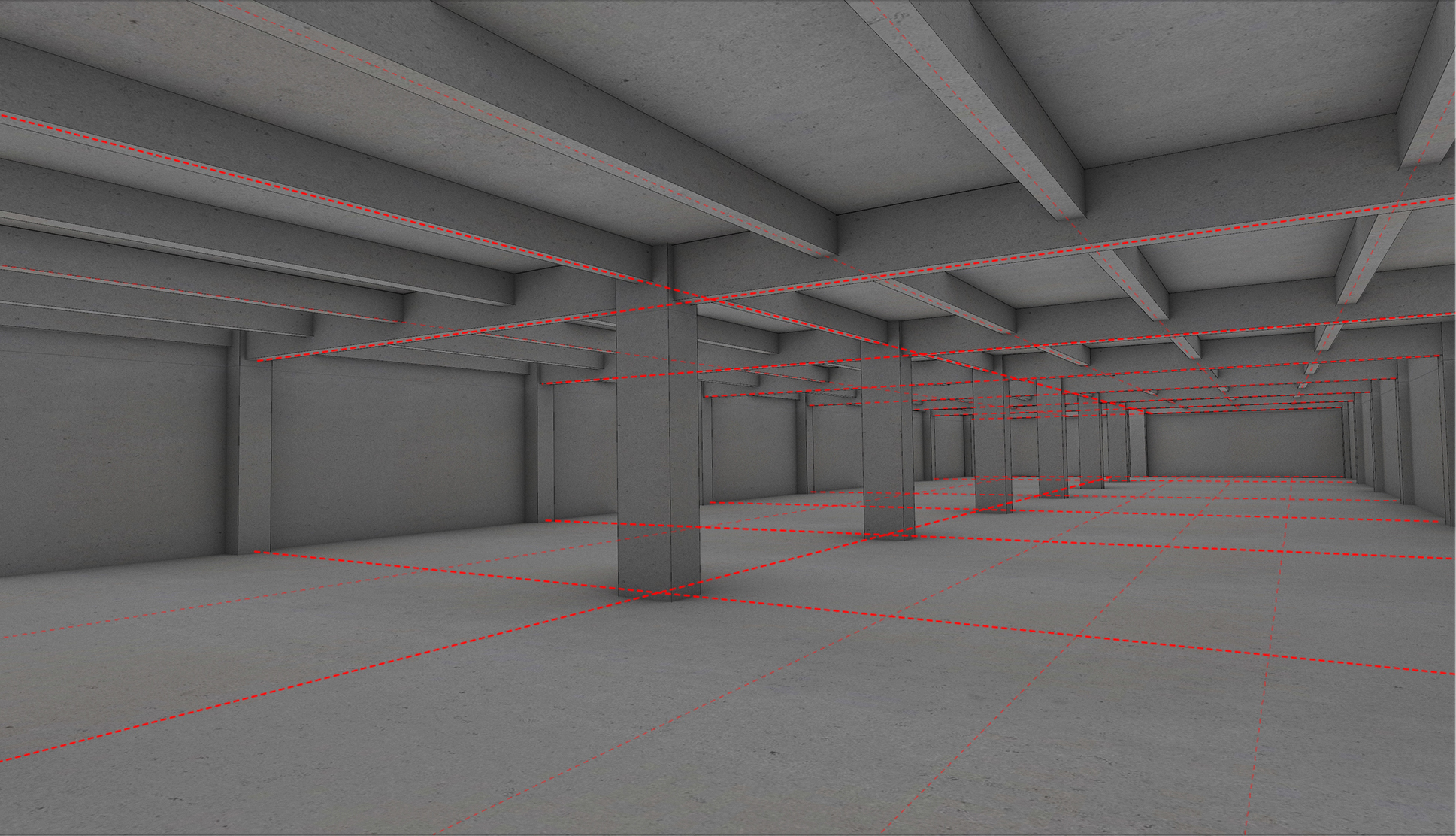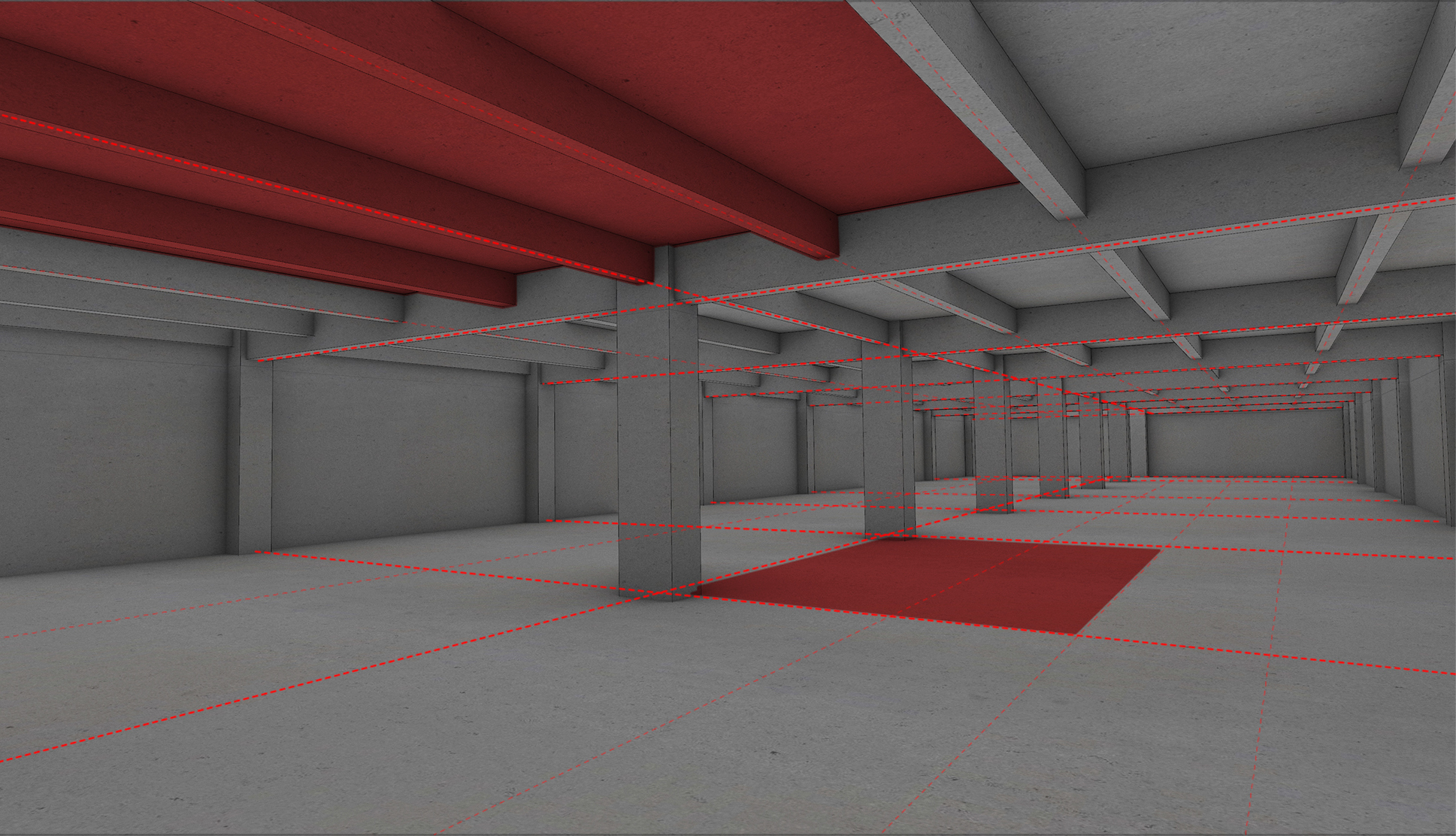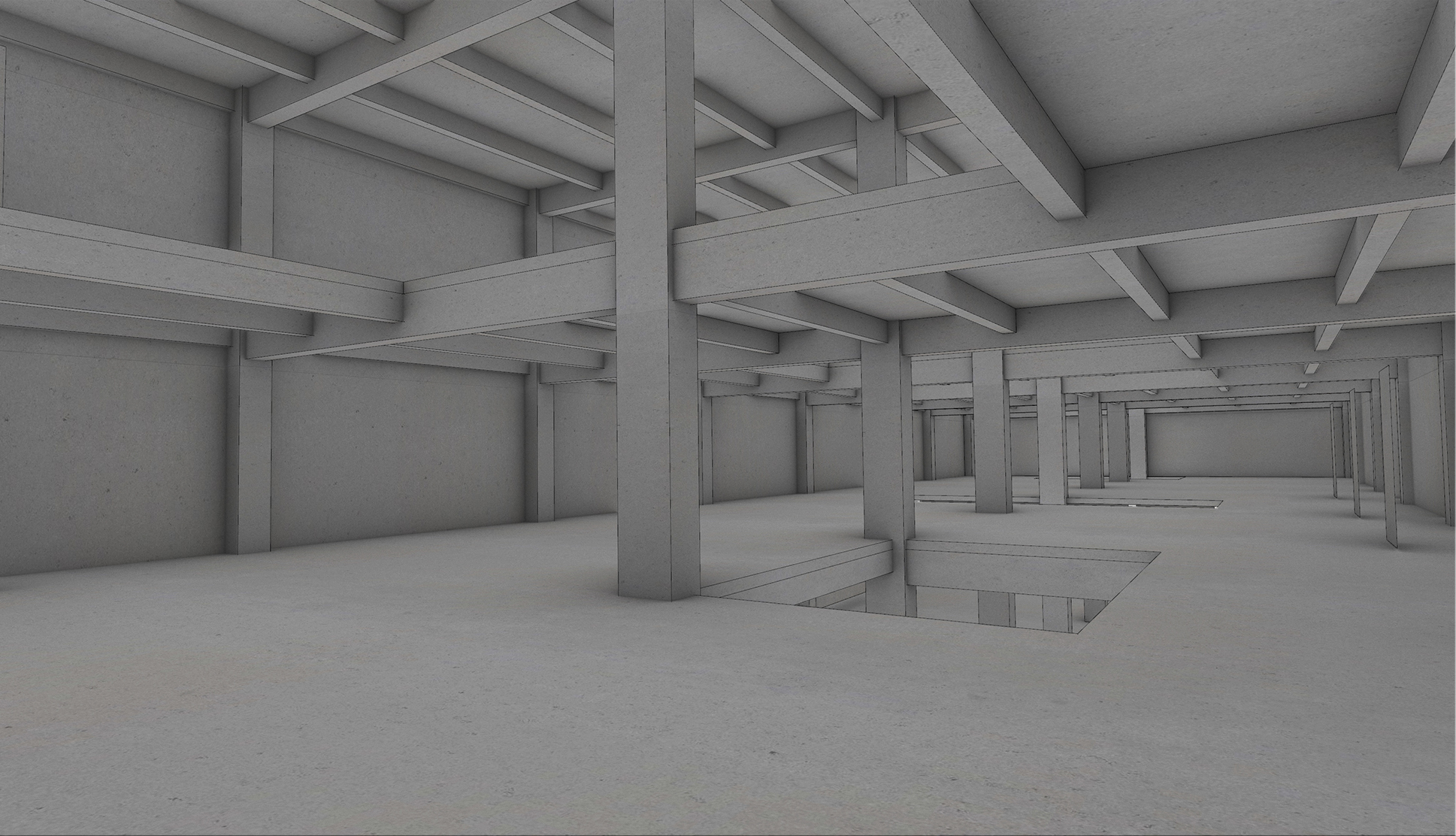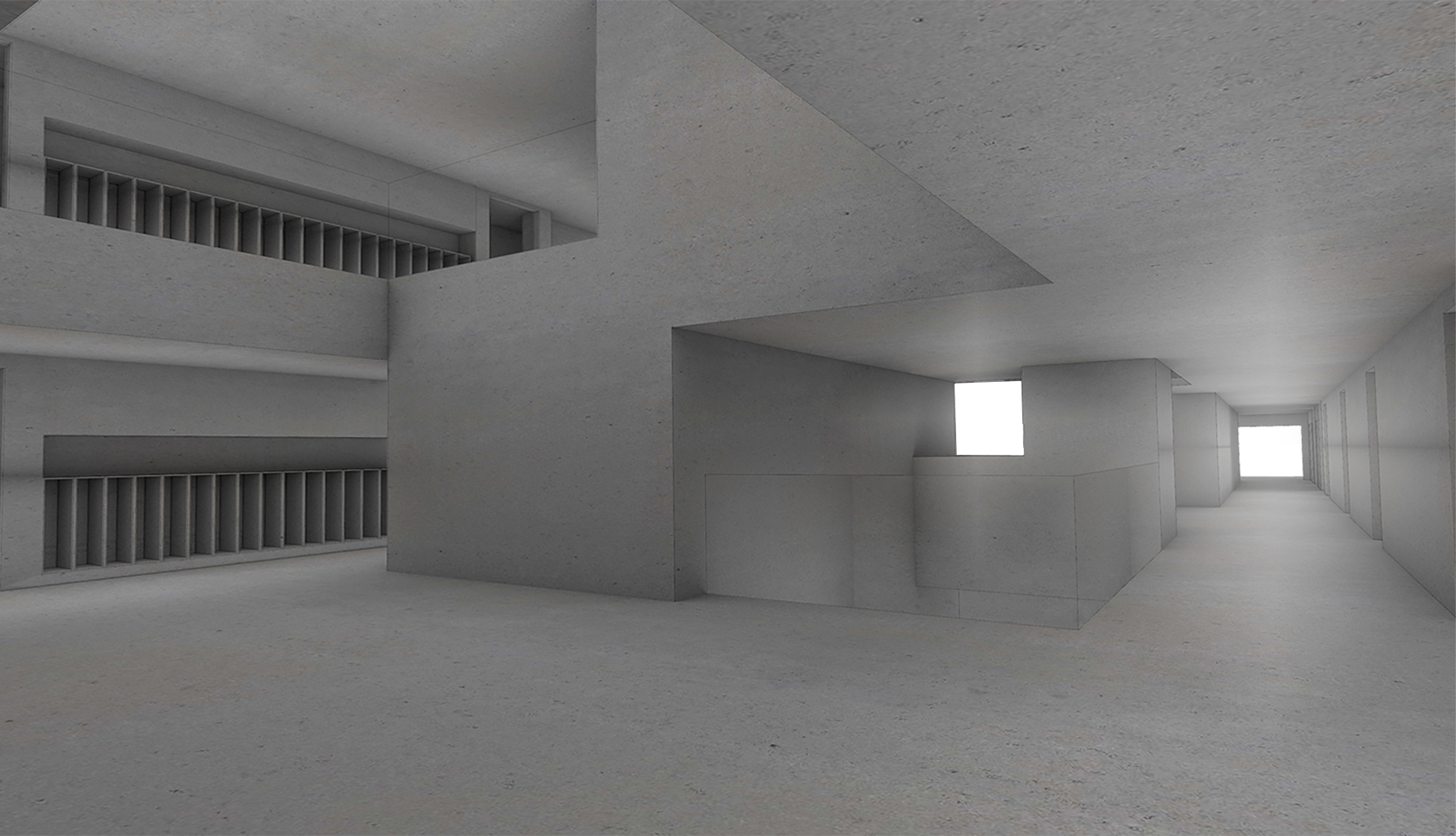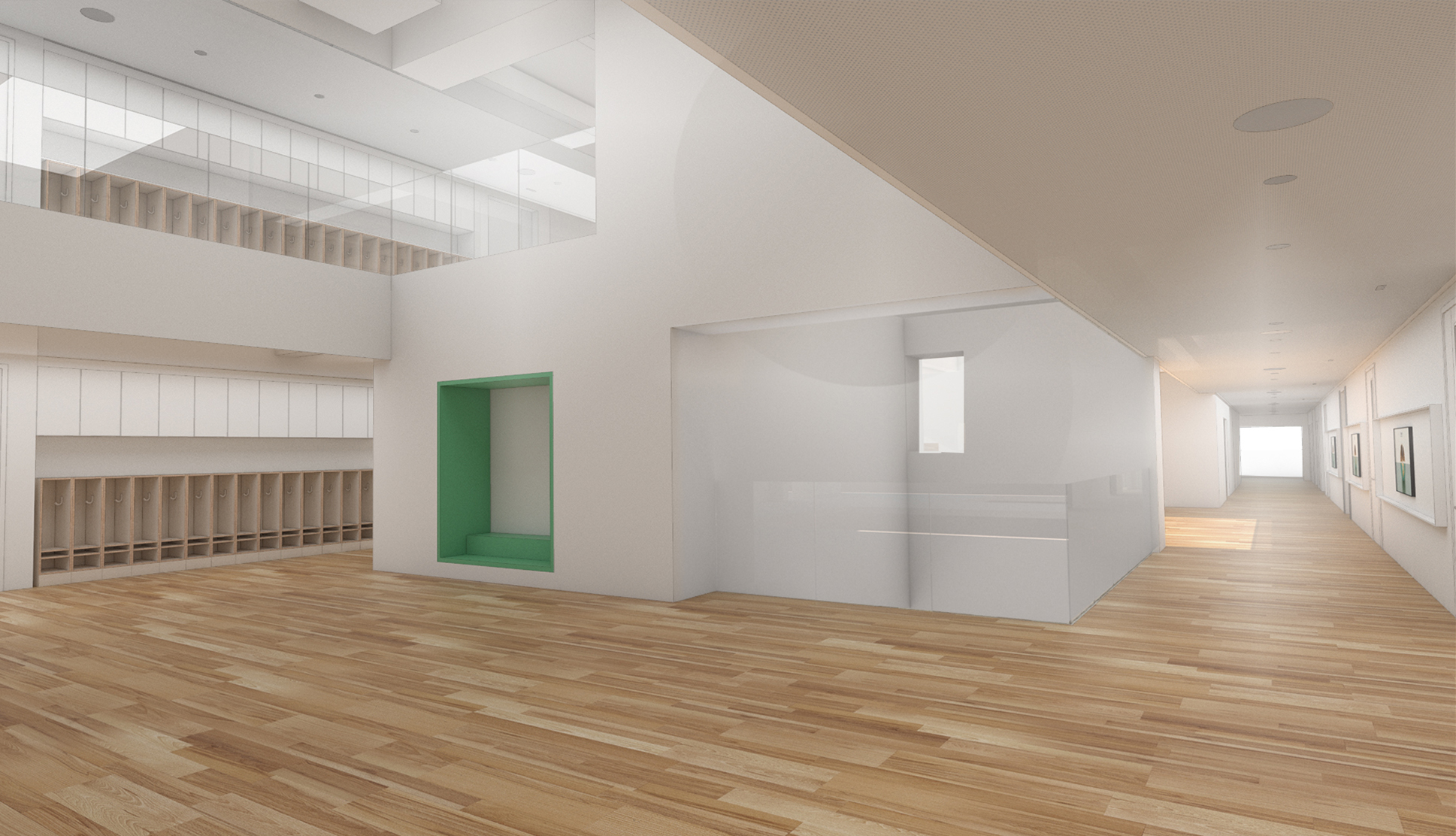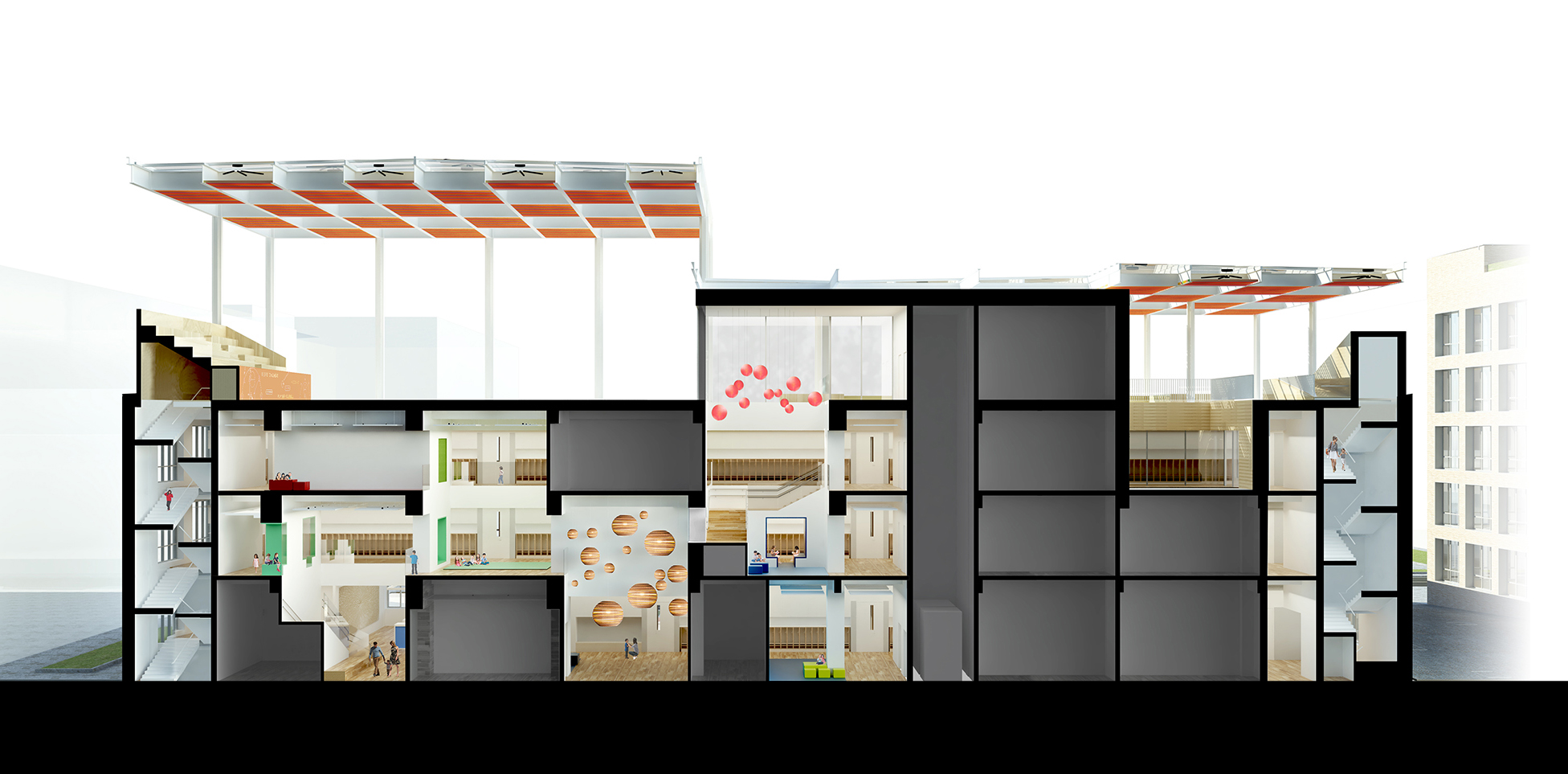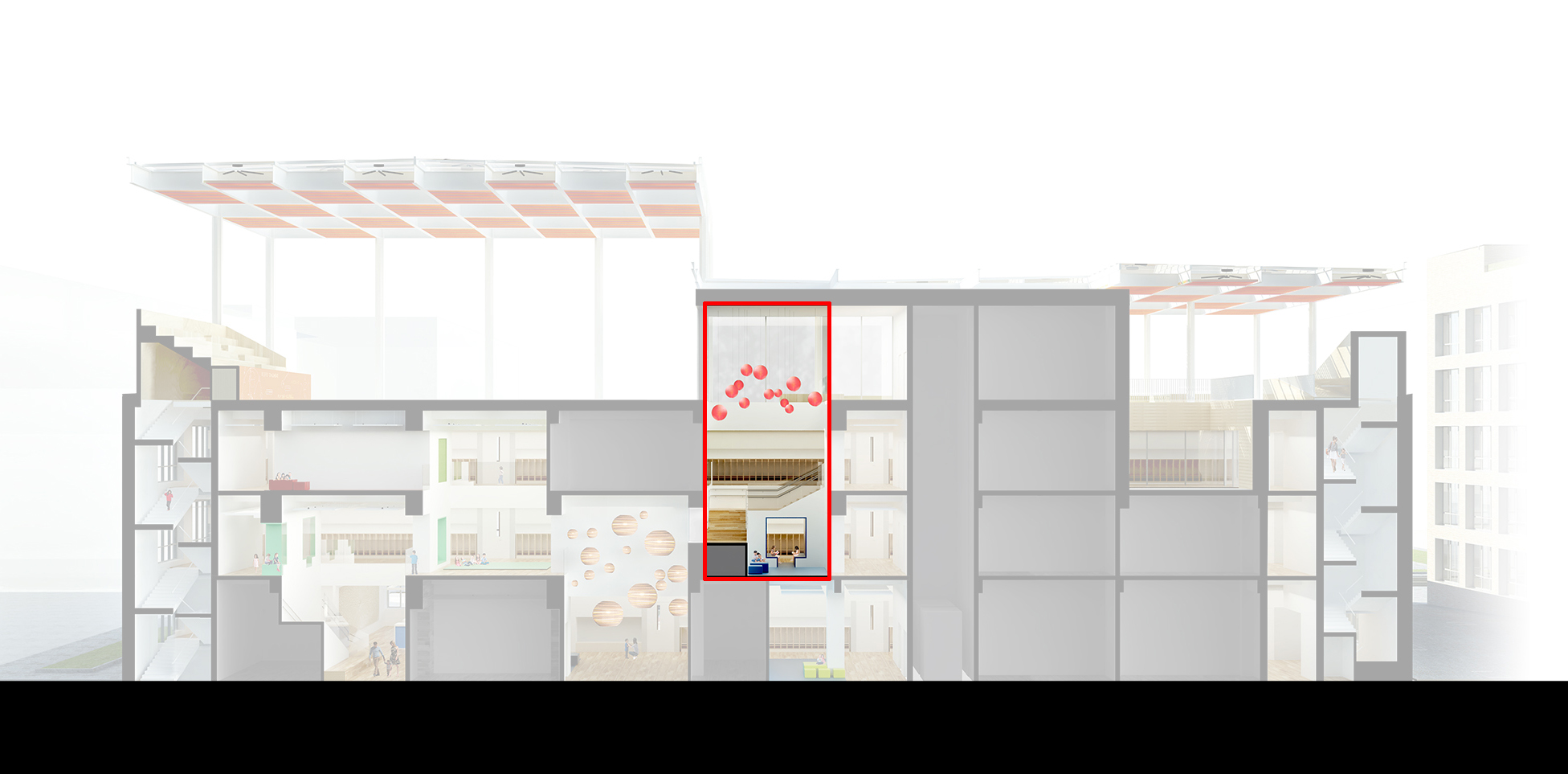Strategic Subtractions are critical to our design approach for adaptive reuse projects as they allow us to create new spatial opportunities whilst keeping the integrity of existing structures. We often use them in conjunction with Strategic Additions, to create transformative environments.
This section shows an existing warehouse structure that does not allow any connectivity between floors.
Using the rigor of the existing structural framing, we envisioned a 3D matrix as a system for careful interventions.
The new floor penetrations are strategically located to create diagonal visual axes between floors allowing for better visual connectivity and daylight penetration into the center of the building.
The interconnected atria generated by these carefully executed interventions allow for fluidity of spaces, activation of roof surfaces and bringing in natural light into the center of the building.
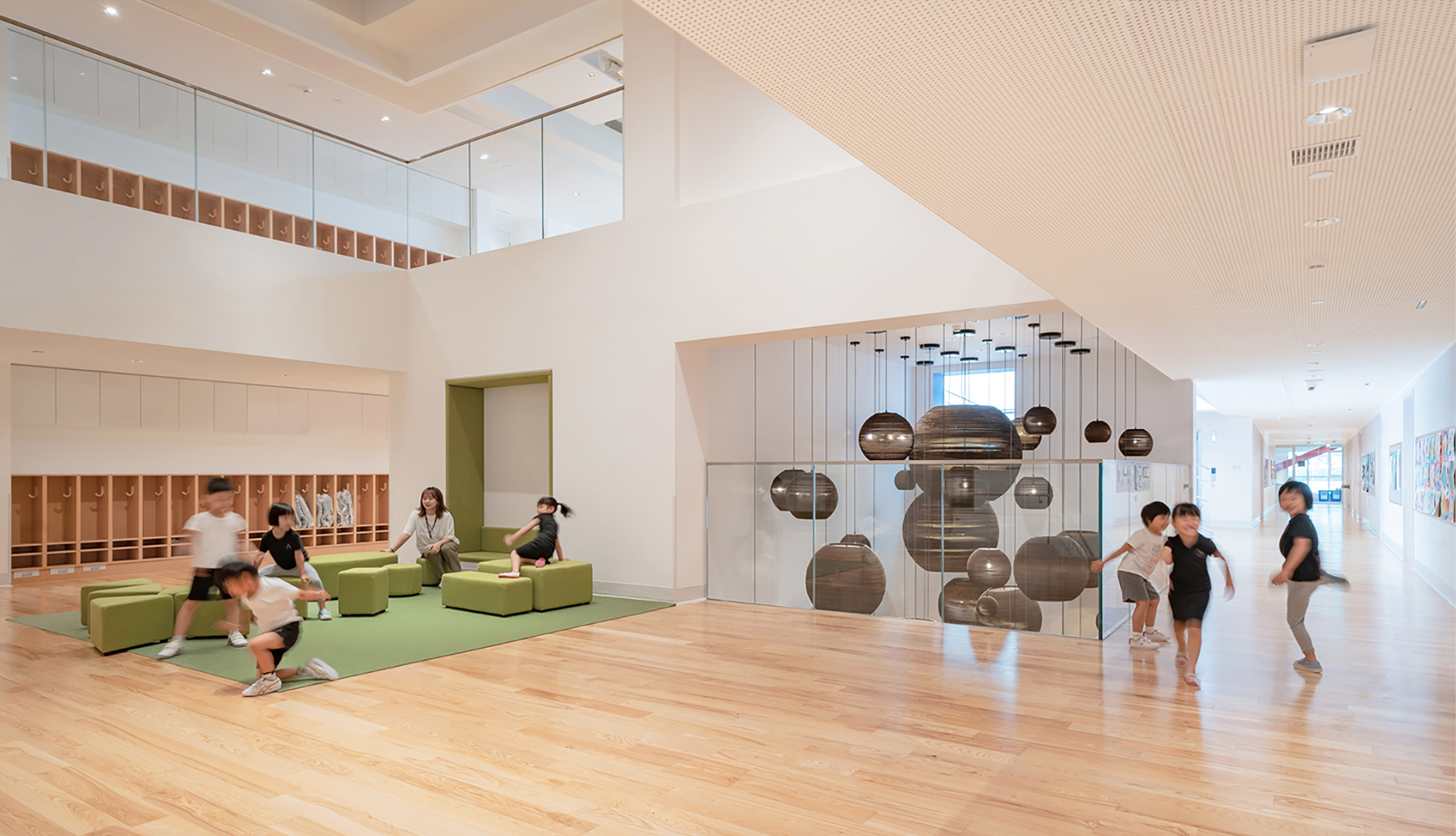 Photo © Zhang Chao
Photo © Zhang ChaoAt a closer look, this view shows the rigorous concrete structural framing of the existing warehouse building.
The floor penetrations follow the rigor of the floor framing.
The amount of slab removal is optimized to create the maximum amount of openness while keeping most of the existing structure intact.
The labyrinthine spatial quality of interconnected atria, nested with clusters of break-out spaces, transforms the utilitarian warehouse floor slabs into experiential spatial sequences.
With these carefully choreographed interventions, the existing Warehouse Building transforms into a world-class Education Facility: Avenues Shenzhen Early Learning Center.
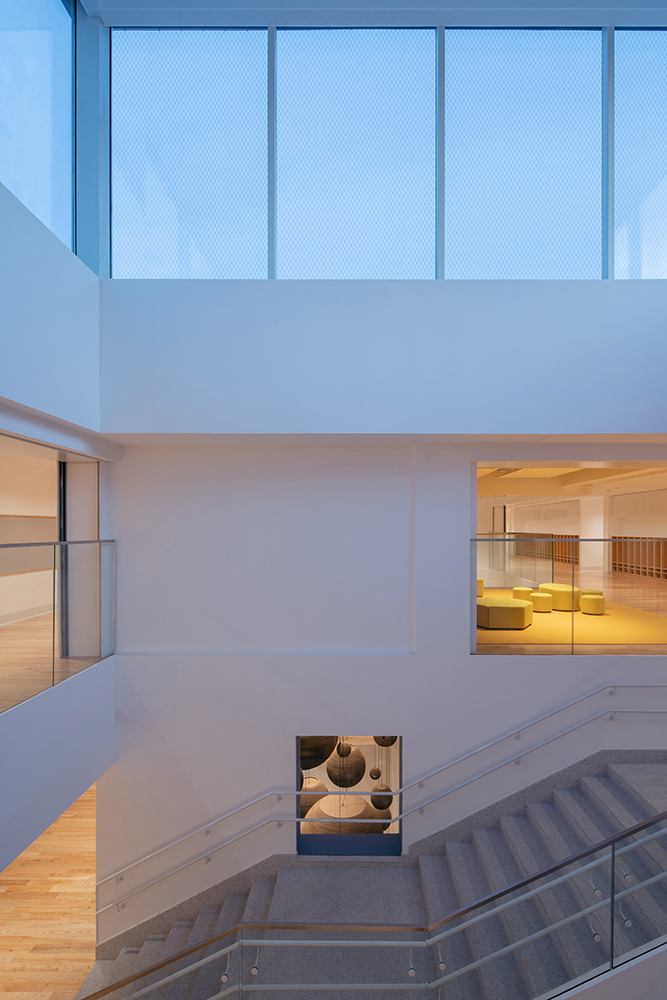 Photo © Zhang Chao
Photo © Zhang ChaoStrategic Subtractions work with Strategic Additions as interlocking design strategies. This final section of the re-purposed structure shows the interconnected atria created from the existing structure flowing into the new rooftop pavilions and canopies.
